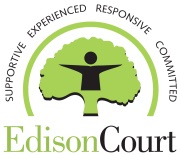Risk assessment for sexually abusive youth is not simply aimed at defining a risk level; instead, it is aimed more at developing a deep understanding of the youth upon which to build realistic, appropriate, and meaningful treatment interventions. We are therefore not only concerned with estimating risk for sexual re-offense but also, and perhaps more importantly, concerned with preventing sexual recidivism.
Risk Factors
Risk factors increase the probability that a person will suffer harm. They combine and interact with each other to create situations that any single risk factor alone might not have sufficient energy to produce. There are two types of risk: internal and external. Internal risk is linked to a person (e.g. attitudes and beliefs, sexual interests, poor self-regulation, intellectual disability, lack of concern for others, arrested moral development). External risk exists in the environment independent of a person (e.g. social attitudes, family dysfunction, exposure to violence and criminality, economic hardship, peer pressure/antisocial peer group values, unstable/difficult living conditions).
Risk factors can be static or dynamic. Static risk factors are historical behaviors and experiences that remain unaltered over time- in the absence of new information they remain fixed. Dynamic risk factors are associated with current behaviors, thoughts, feelings, attitudes, interactions and relationships towards which treatment is generally directed. They can, and do, often change over time. Overall, we are looking to treat the dynamic risk factors ( e.g. anger, substance abuse) present at the time of the offense and we are also looking to develop and strengthen protective factors.
Protective Factors
Protective factors are things that decrease the potential harmful effect of a risk factor and have meaning only in the presence of risk. They are not simply polar opposites.
There are two models of risk assessment: actuarial and clinical. An actuarial risk assessment is based on a statistical analysis of historical static risk factors and a resulting statistical projection of future behavioral trends. The model pays little attention to who the individual is and their relationship with external variables. For example, if you are a 16 year old driver you are classified as high risk to have an accident no matter how you drive individually because you are being statistically compared to a group (all 16 year old drivers). Unlike actuarial risk assessment, which is unable to give meaning to the behavior being assessed or to understand the individual engaging in the behavior, clinical risk assessment is based on an understanding of an individual and the risk factors within the individual and the individual’s environment.
Juvenile risk assessment is a dynamic process. In addition to helping to predict risk, it is increasingly used as a case management and treatment planning tool. Assessment of juveniles takes into account the still developing nature of the child/adolescent and concepts that place behavior in the context of the social environment as well as the context of child and adolescent development. As a result, these assessments should be considered reliable only over a relatively short period of time.
The purpose of comprehensive risk assessment, risk assessment within the contexts of a more global assessment, is to provide a formulation about the circumstances of the sexually abusive behavior, its natural history, and its likely prognosis if things remain unchanged. A risk assessment “instrument” is a tool (think J-SOAP II , ERASOR) designed to avoid or reduce the possibility of poorly conducted and ill-informed risk assessment. Prentky and Righthand (et.al. 2010) write that despite concerns regarding predictive validity, the J-SOAPII may be useful for making short term case management decisions and “especially useful for guiding effective treatment interventions”. It is intended to provide structure, definition, and consistency to the risk evaluation process.
Thus risk tools are best used in a preventative fashion to guide intervention and to encourage youth towards more pro-social developmental trajectories and to help allocate limited resources to those youth who are most in need.

Add new comment